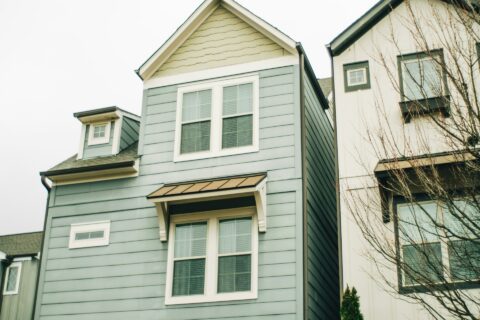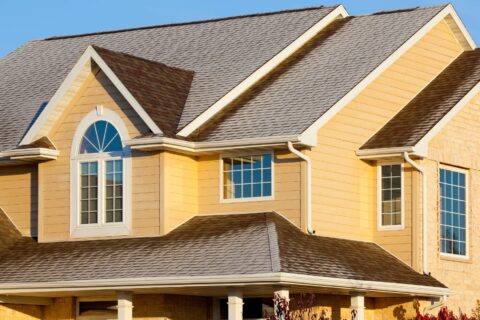Modern Siding Trends for Energy-Efficient Homes
Energy efficiency is more important than ever for homeowners looking to reduce utility bills and decrease their environmental footprint. One of the most effective ways to improve your home’s energy efficiency is by updating the siding. Modern siding not only enhances the aesthetic appeal of your home but also offers significant energy-saving benefits. By choosing the right type of siding, you can improve insulation, reduce heating and cooling costs, and increase your home’s overall value.
New advancements in siding materials and technology are making it easier for homeowners to achieve energy efficiency without compromising on style. From insulated vinyl to fibre cement and engineered wood, the options are diverse and versatile. Each material offers unique benefits, catering to different climates, architectural styles, and personal preferences.
In this article, we will discuss the importance of energy-efficient siding, explore the top modern siding materials, delve into innovative siding designs and features, and provide tips for choosing the right siding for your home. Our goal is to help you make an informed decision that will keep your home comfortable and energy-efficient throughout the year.
The Importance of Energy-Efficient Siding
Benefits for Homeowners
Energy-efficient siding offers numerous benefits for homeowners. One of the main advantages is reduced energy costs. High-quality siding with effective insulation minimizes heat transfer, keeping your home cooler in the summer and warmer in the winter. This results in lower heating and cooling bills, making your home more cost-efficient. Furthermore, energy-efficient siding increases comfort by maintaining a consistent indoor temperature, reducing drafts and cold spots.
Beyond cost savings, energy-efficient siding enhances the overall value of your home. Prospective buyers are increasingly looking for homes with energy-saving features. By upgrading to modern, energy-efficient siding, you can significantly improve your home’s marketability and potentially achieve a higher selling price. Additionally, some types of energy-efficient siding are maintenance-free or require minimal upkeep, saving you time and effort down the line.
Environmental Impact
Energy-efficient siding also plays a significant role in reducing your home’s environmental footprint. By improving your home’s insulation, you reduce the need for excessive heating and cooling, thereby lowering the energy consumption. This reduction in energy use translates to fewer greenhouse gas emissions, contributing to a greener, more sustainable environment.
Moreover, many modern siding materials are manufactured using eco-friendly processes and materials. Products like fibre cement and engineered wood often use recycled content, reducing the demand for virgin resources. By choosing siding options that are both energy-efficient and environmentally friendly, we support sustainability and the long-term health of our planet.
Top Modern Siding Materials for Energy Efficiency
Insulated Vinyl Siding
Insulated vinyl siding is a popular choice among homeowners seeking energy efficiency. It features a layer of rigid foam insulation attached to the vinyl panel. This design enhances the siding’s insulating properties, reducing thermal bridging and improving overall energy performance. Additionally, insulated vinyl siding is durable, resistant to fading and cracking, and available in a variety of colours and styles to match any home’s exterior.
Fibre Cement Siding
Fibre cement siding is another excellent option for energy-efficient homes. Made from a blend of cement, sand, and cellulose fibres, this material offers impressive durability and insulation properties. It resists damage from harsh weather conditions, pests, and rot, making it a long-lasting siding choice. Fibre cement siding can be manufactured to mimic the look of wood, stucco, or masonry, providing plenty of aesthetic flexibility without sacrificing performance.
Engineered Wood Siding
Engineered wood siding combines the natural beauty of wood with enhanced durability and energy efficiency. This siding is made from wood fibres and resins, resulting in a strong, resilient material that provides better insulation than traditional wood. Engineered wood siding is more resistant to moisture, insects, and temperature fluctuations, reducing maintenance needs. It is also available in various textures and finishes, allowing homeowners to achieve a high-end wood appearance without the associated drawbacks.
By exploring these modern siding materials, you can find the perfect balance of energy efficiency, durability, and aesthetic appeal to suit your home’s needs. Upgrading your siding can lead to a more comfortable, cost-effective, and environmentally friendly living space.
Innovative Siding Designs and Features
Improved Insulation Technology
Modern siding now comes equipped with enhanced insulation technologies that improve energy efficiency. One such technology is the use of insulated backing materials, like foam, which is integrated into the siding to provide an additional layer of thermal resistance. This not only helps to minimize heat loss during winter but also reduces heat gain in the summer, keeping your indoor environment comfortable year-round. High-performance insulation can substantially lower your heating and cooling costs, making it a wise long-term investment.
Another innovation is the development of breathable membranes that prevent moisture buildup while maintaining a high level of insulation. These membranes allow moisture to escape, preventing issues like mould and mildew, which can compromise the integrity of your siding and your home’s air quality. Investing in siding with advanced insulation features can significantly enhance your home’s energy efficiency and longevity.
Reflective Coatings and Paint
Reflective coatings and specialized paints are another breakthrough in siding design that contributes to energy efficiency. These coatings are designed to reflect more sunlight, reducing the amount of heat absorbed by your home. This is particularly effective in hot climates where sun exposure can cause interior temperatures to rise, leading to increased reliance on air conditioning.
Reflective coatings come in a variety of finishes and can even be applied to existing siding, making it a versatile option for enhancing energy efficiency without replacing your current siding. Additionally, these coatings often include UV protection, which helps prevent fading and extends the life of your siding. By opting for siding with reflective properties, you can maintain a cooler home and reduce energy consumption during the hotter months.
Choosing the Right Siding for Your Home
Evaluating Climate and Location
When selecting siding, it’s crucial to evaluate the climate and location of your home. Different materials perform better under varying environmental conditions. For example, fibre cement siding is ideal for homes in areas prone to extreme weather conditions due to its durability and resistance to moisture. Insulated vinyl siding, on the other hand, performs well in both cold and hot climates by offering excellent thermal resistance and minimal maintenance requirements.
Consider any local climate challenges, such as heavy rainfall, extreme temperatures, or high humidity, and choose a siding material that is designed to withstand these conditions. Evaluating your surroundings can help you make a more informed decision, ensuring that your siding not only enhances energy efficiency but also provides long-term protection and aesthetic appeal.
Balancing Aesthetics with Performance
Balancing aesthetics with performance is another essential factor when choosing siding for your home. While it’s important to select a siding material that matches your home’s architectural style and personal taste, you should also consider its energy efficiency and durability. Modern siding materials offer a wide range of styles, textures, and colours, so you don’t have to sacrifice looks for performance.
Think about the overall look you want to achieve and explore options that offer a blend of aesthetic appeal and practical benefits. For example, engineered wood siding provides a natural, wood-look finish with enhanced insulation properties. Fibre cement can mimic the appearance of different materials while offering superior durability and energy efficiency. By striking the right balance, you can create a beautiful, energy-efficient exterior that meets all your needs.
Conclusion
Investing in modern, energy-efficient siding is one of the best ways to enhance your home’s comfort, appearance, and value. With a variety of materials, designs, and features available, you can choose the perfect siding to meet your specific needs. Evaluating climate, considering insulation technologies, and balancing aesthetics with performance will help you select the right siding that offers long-term benefits.
Energy-efficient siding not only reduces your utility bills but also contributes to a more sustainable environment. By improving your home’s insulation and reducing energy consumption, you can enjoy a more comfortable living space while minimizing your environmental impact. Upgrading your siding is a smart investment that pays off in numerous ways.
Ready to upgrade your home’s siding for better energy efficiency and stunning curb appeal? Contact Magnum Exteriors’ siding contractor in Ottawa today for expert advice and professional installation services. We’re here to help you make the best choice for your home.


